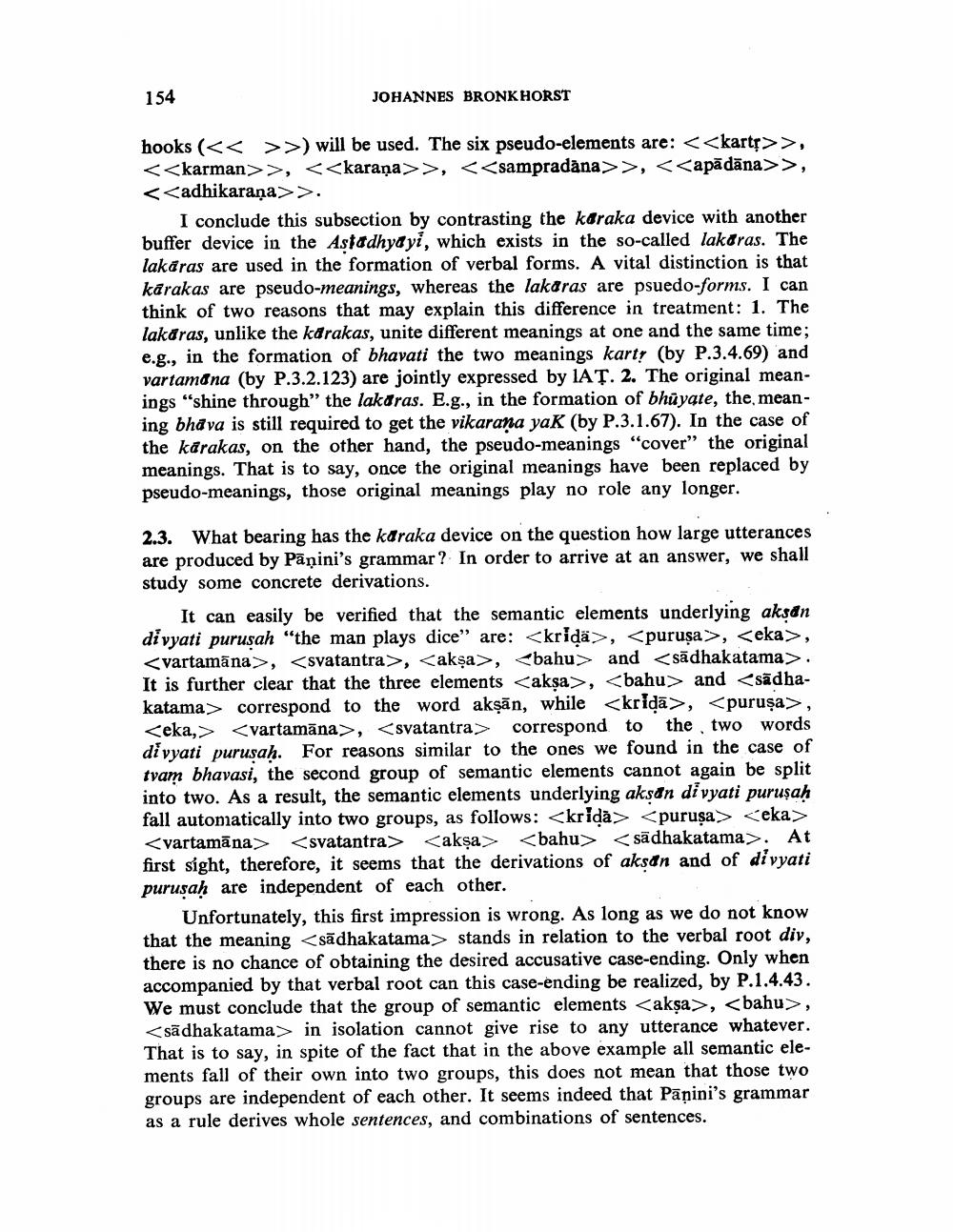Book Title: Role Of Meanings Uin Paninis Grammar Author(s): Johannes Bronkhorst Publisher: Johannes Bronkhorst View full book textPage 9
________________ 154 JOHANNES BRONKHORST hooks (<< >>) will be used. The six pseudo-elements are: <<karts>>, <<karman>>, <<karana>>, <<sampradāna>>, <<apādāna>>, <<adhikarana>>. I conclude this subsection by contrasting the karaka device with another buffer device in the Astadhyd yi, which exists in the so-called lakoras. The lakaras are used in the formation of verbal forms. A vital distinction is that karakas are pseudo-meanings, whereas the lakaras are psuedo-forms. I can think of two reasons that may explain this difference in treatment: 1. The lakaras, unlike the karakas, unite different meanings at one and the same time; e.g., in the formation of bhavati the two meanings kartı (by P.3.4.69) and vartamdna (by P.3.2.123) are jointly expressed by IAȚ. 2. The original meanings “shine through” the lakaras. E.g., in the formation of bhūyate, the meaning bhava is still required to get the vikarana yak (by P.3.1.67). In the case of the karakas, on the other hand, the pseudo-meanings "cover" the original meanings. That is to say, once the original meanings have been replaced by pseudo-meanings, those original meanings play no role any longer. 2.3. What bearing has the karaka device on the question how large utterances are produced by Pāṇini's grammar? In order to arrive at an answer, we shall study some concrete derivations. It can easily be verified that the semantic elements underlying aksdn divyati puruṣah “the man plays dice” are: <krida>, <puruṣa>, <eka>, <vartamāna>, <svatantra>, <akşa>, <bahu> and <sādhakatama>. It is further clear that the three elements <akşa>, <bahu> and <sādhakatama> correspond to the word akşān, while <kridā>, <puruşa>, <eka,> <vartamāna>, <svatantra> correspond to the two words di vyati purusah. For reasons similar to the ones we found in the case of tvam bhavasi, the second group of semantic elements cannot again be split into two. As a result, the semantic elements underlying aksan di vyati puruṣah fall automatically into two groups, as follows: <kridā> <puruşa> <eka> <vartamāna> <svatantra> <akşa> <bahu> <sādhakatama>. At first sight, therefore, it seems that the derivations of akson and of di vyati puruṣah are independent of each other. Unfortunately, this first impression is wrong. As long as we do not know that the meaning <sādhakatama> stands in relation to the verbal root div, there is no chance of obtaining the desired accusative case-ending. Only when accompanied by that verbal root can this case-ending be realized, by P.1.4.43. We must conclude that the group of semantic elements <akşa>, <bahu>, <sādhakatama> in isolation cannot give rise to any utterance whatever. That is to say, in spite of the fact that in the above example all semantic elements fall of their own into two groups, this does not mean that those two groups are independent of each other. It seems indeed that Panini's grammar as a rule derives whole sentences, and combinations of sentences.Page Navigation
1 ... 7 8 9 10 11 12
